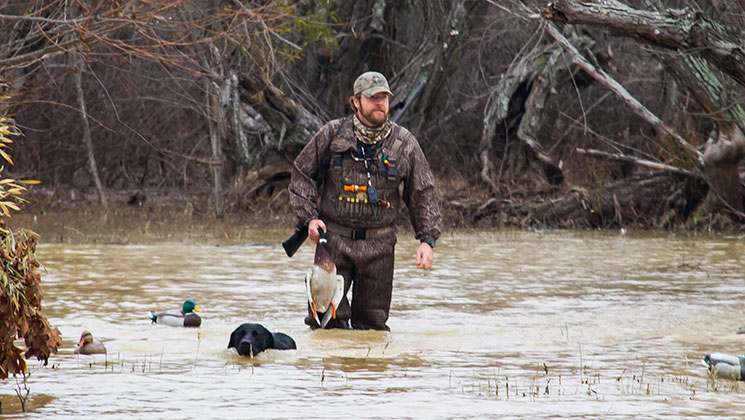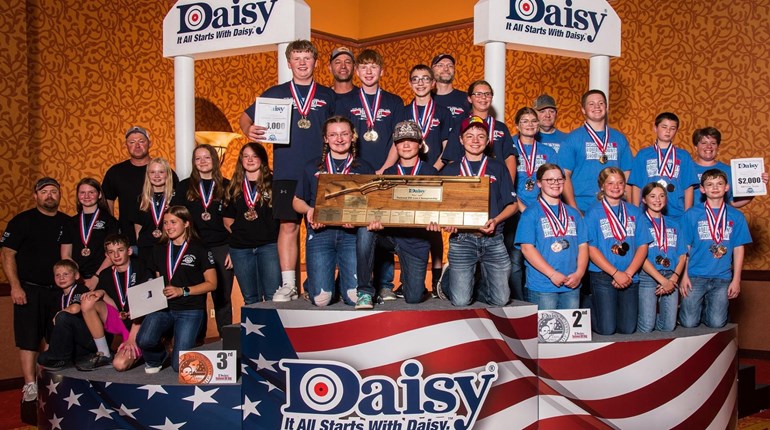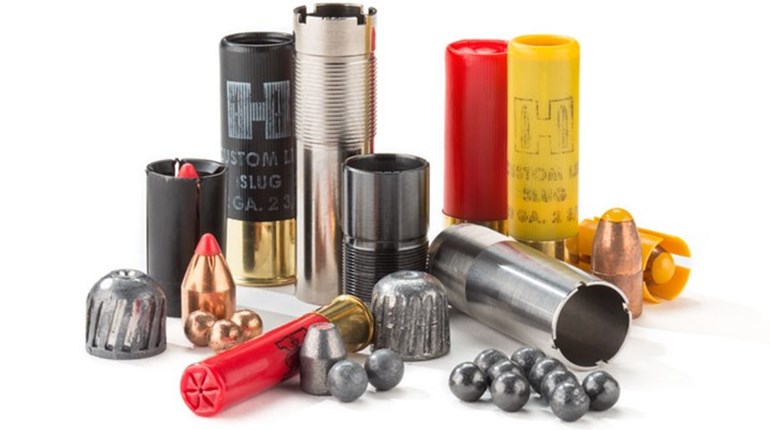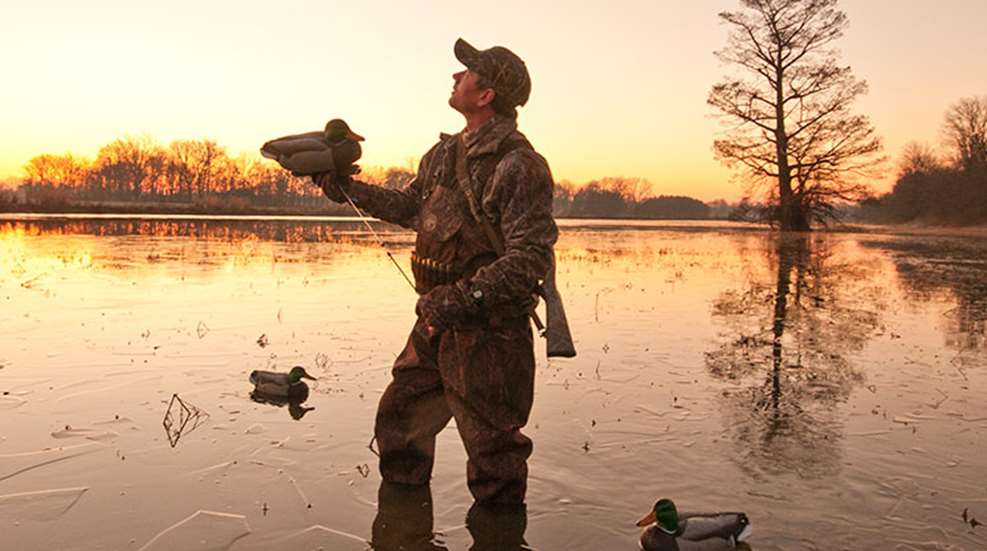
When a wildfowler’s thoughts turn to Arkansas, they more than likely turn to hunting flooded green timber and rice fields for greenhead mallards. But the Natural State has so much more to offer the wildfowler. During some late-season hunting there last January, I experienced several new sides of waterfowl hunting in the state. Sure, we hunted flooded green timber and a rice field or two. And of course, mallards were the predominant species bagged in the timber. But we shot wood ducks and the occasional gadwall in there, too. The rice fields, on the other hand, yielded a cornucopia of wildfowl that included pintails, widgeons, green-winged teal, northern shovelers, specklebellies and snow geese (and mallards, of course). Among all the memories was the glee my friend and photo assistant, Jarod Highberg, exuded over his first drake shoveler, which he is getting mounted.
Stuttgart, Ark., and the 50 square miles surrounding it offer an amazing amount of waterfowl habitat. There, huge numbers of ducks and geese winter. While the bulk of my hunting has been in the vicinity of Stuttgart (viewed by many as the rice and duck capital of the world), there is great hunting in many other parts of Arkansas. I hunted a huge cypress swamp along the Mississippi in Arkansas 50 miles north of Memphis, and in northeast Arkansas close to the Cache River. From the northwest corner of the state, the Arkansas River flows southeast 400 miles and empties into the Mississippi. According to Richard Davies, recently of Arkansas Parks and Tourism, there is good to excellent hunting along most of the Arkansas River and he has shot many a duck in view of Little Rock’s skyscrapers.
I traveled through the state with my good friend Yancey Forest Knowles; our Arkansas hunting was hosted by friends at several duck clubs—Menosha, Crockett’s Bluff and Blackfish Bayou—all within 90 miles of Stuttgart.
Our first base of operations was the Goat Farm Duck, Goose, Debauchery and Inside Straight Club. We shot a wide variety of ducks there throughout the week, including all the major puddle ducks and most of the primary diver species as well as two limits of specklebellied geese. I confess to being skeptical when I was informed we might take canvasbacks and scaups, which I associate with Long Island Sound, the Great Lakes and the Chesapeake Bay. I never thought of hunting cans and bills in Arkansas except for the occasional single that had lost its way. During the week we took nine species of ducks—mallards, gadwalls, widgeons, pintails, green-winged teal, wood ducks, northern shovelers (spoonbills), redheads, ring-necks—and one lesser scaup and a specklebelly. We did not collect any canvasbacks although two pairs floated into the decoys and flew away unscathed.
We hunted from a blind cut into the levy of a 30-acre open impoundment that was formerly used to raise catfish. On the backside of the levy was a 20-acre flooded buckbrush slough that roosted hundreds, maybe thousands, of puddle ducks, which was not hunted until the last week of the season. The surrounding area had numerous catfish ponds, flooded timber, and corn and rice fields. Thus, the plate was set to attract and hold divers, puddle ducks and geese, and they were there in numbers.
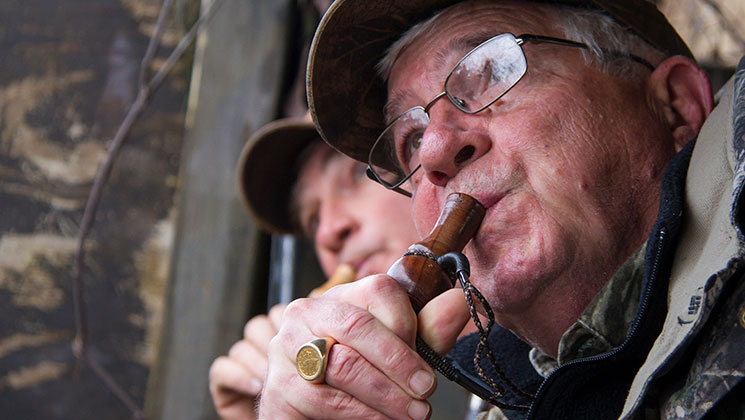
All the guys I hunted with were well equipped to say the least, as waterfowl hunting in Arkansas is a way of life bordering on obsession. We shot from a well-built camouflaged blind and layout blinds, and we used a Go Devil-powered jon boat. The decoy spreads ranged from a dozen floaters carried into a buckbrush slough to a hundred floaters and full-bodied field decoys. David Carrington and John Donati’s yellow Labs, Hatchet and Blanca, made easy work of the numerous retrieves during the two-day hunt. Only one duck escaped, which was found after the hunt when David gave Hatchet a blind retrieve along the east bank of the impoundment where the scaup was last headed. It was Jarod’s first drake scaup, making the retrieved cripple even more special.
The first morning of our trip Yancey and I hunted with my good friend Jamie McGehee at the venerable Menosha Club just across the Arkansas border and 30 miles north of Memphis. We hunted out of a sizeable elevated blind in a large hole in a classic cypress swamp. Being opening day of the second split, “thee ducks, they did come” and we limited on mallards and gadwalls, calling our shots and trying to shoot drake mallards only. (Someone shot two hens but it wasn’t me.)
Next we were guests of Ken McRae at Crockett’s Bluff Club, set on a bluff overlooking the White River. Crockett’s Bluff, on the National Register of Historic Places, has the coolest clubhouse, bar none, of all the clubs I’ve shot. Nearly every square inch of its walls is decorated with art, old photos, calendars, mounts and waterfowling memorabilia.
At Crockett’s Bluff, Yancey and I shot a huge, 1,000-acre shallow water reservoir laden with ducks and geese with Ken McRae and Capt. Jack Parker. Ken and I both shot side-by-side double guns: Ken used his beautiful Winchester Model 21 and I used my Orvis Arietta. Jack shot a 20-gauge Benelli and Yancey a Winchester SX3 12-gauge. While the geese did not play, the ducks did, and we headed for the dock with four limits of teal, mallards, gadwalls and widgeon. The second morning, we hunted an oxbow close to the White River National Wildlife Refuge in a 30-foot-long blind with several hundred preset decoys. Choosing to shoot drakes only, we killed a mixed bag of a dozen ducks consisting of mallards, gadwalls, widgeons and wood ducks. This day, Kenny shot a classic 1950s vintage Browning A5. That night, I prepared six freshly killed, plucked specklebellied geese, and the guys raved about the birds living up to their nickname: ribeye in the sky.
The last duck hunt of our trip was with my new friend Buck Neely at the venerable Blackfish Bayou Club about 40 miles south of Memphis. The night before, after a few cocktails, we dined on quail, duck and opossum (to which Yancey and I politely opted out), and hit the sack at 8:30. Wake-up was at 3:45 a.m., and after cereal and coffee we met a 76-year-old gentleman named Henry Morgan, who would join us for our last hunt.
We walked down to the dock and motored out to the “Two” cypress blind in total darkness, flushing thousands of ducks on the way. There was a stiff 15-mph wind, but hundreds of mallards, teal and gadwalls, and large flocks of ring-necks (known as “ringers”) buzzed and landed in the decoys as we eagerly anticipated shooting time. Shooting was tough, and while Henry, Buck and I went to work on the ringers, Yancey held fire for drake mallards. The hunt ended with four drake mallards, three to Yancey’s gun and one to mine.
